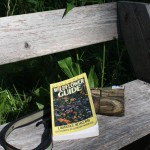 For beginning naturalists, the vast number of wildflower guides can be nearly as daunting as the innumerable species of plants waiting to be identified.
For beginning naturalists, the vast number of wildflower guides can be nearly as daunting as the innumerable species of plants waiting to be identified.
It’s easy to find guides to wildflower identification in stores or online, but finding the right ones can sometimes be a matter of finding the right seller. I like to visit the gift shops at nature centers, wildlife refuges, and parks. They carry books specific to the state, region, or habitat type where they’re located (plus, buying from them helps a good cause).
Don’t bother with books that say, “For beginners.” That generally means only that a limited number of plants are included in order to simplify things. Which is silly. The local wetland will not exhibit fewer species in order to simplify things for you; neither should your field guide.
For simplicity, beginners can choose a guide that categorizes flowers by their color. Numerous print field guides are organized in this way, as are some user-friendly websites.
Other guides are organized by plant families – asters, milkweeds, mints, lilies, and so on. While this method may seem complex at first, you may be surprised at how quickly you begin to recognize common traits that help you place an unfamiliar plant in the correct family. Some of my favorite books are organized this way, including Prairie Plants of the University of Wisconsin-Madison Arboretum.
The book to which I refer most regularly, however, is Newcomb’s Wildflower Guide. It’s illustrated with line drawings, which I find simpler than photographs. Newcomb is organized in a completely different way – with a key system. This operates like a botanical version of Twenty Questions (Are the leaves arrow-shaped or not arrow-shaped? Are the flowers over ½-inch wide or under ½-inch wide?). The answers progressively narrow the choices until the final one leads to the appropriate page…usually. On the other hand, if I answer the first question incorrectly, I’m sent down the wrong path entirely.
Ultimately, there’s no “best” field guide, only the one that’s best for you. I sometimes refer to two or three, plus a website or two, to make a tricky identification…or simply to indulge in the pleasure of browsing through the colorful images, marveling at their diversity, and considering the ephemeral beauty of hundreds of species, any one of which I might see for myself if I’m in the right place at the right time.
